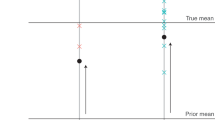Abstract
Machine learning is bringing us self-driving cars, medical diagnoses, and language translation, but how can machine learning help marketers improve marketing decisions? Machine learning models predict extremely well, are scalable to “big data,” and are a natural fit to analyze rich media content, such as text, images, audio, and video. Examples of current marketing applications include identification of customer needs from online data, accurate prediction of consumer response to advertising, personalized pricing, and product recommendations. But without the human input and insight—the soul—the applications of machine learning are limited. To create competitive or cooperative strategies, to generate creative product designs, to be accurate for “what-if” and “but-for” applications, to devise dynamic policies, to advance knowledge, to protect consumer privacy, and avoid algorithm bias, machine learning needs a soul. The brightest future is based on the synergy of what the machine can do well and what humans do well. We provide examples and predictions for the future.
Similar content being viewed by others
Notes
Examples of machine learning algorithms include neural networks, gradient-boosted trees, variational autoencoders, probabilistic graphical models, and reinforcement learning.
References
Athey, S., Tibshirani, J., & Wager, S. (2019). Generalized random forests. The Annals of Statistics, 47(2), 1148–1178.
Blei, D. M., Ng, A. Y., & Jordan, M. I. (2003). Latent Dirichlet allocation. Journal of Machine Learning Research, 3, 993–1022.
Büschken, J., & Allenby, G. M. (2016). Sentence-based text analysis for customer reviews. Marketing Science 35(6), 953–975.
Burnap, A., Hauser, J. R., & Timoshenko, A. (2019). Design and evaluation of product aesthetics: A human-machine hybrid approach. Rochester, NY: Social Science Research Network.
Emilio Calvano, Giacomo Calzolari, Vincenzo Denicolò, and Sergio Pastorello. (2018). Artificial intelligence, algorithmic pricing and collusion. (2018).
Chen, C., Li, O., Tao, D., Barnett, A., Rudin, C., & Su, J. K. (2019). This looks like that: Deep learning for interpretable image recognition. In Advances in NIPS (pp. 8930-8941).
Chernozhukov, V., Chetverikov, D., Demirer, M., Duflo, E., Hansen, C., Newey, W., & Robins, J. (2018). Double/debiased machine learning for treatment and structural parameters. The Econometrics Journal, 21(1), C1–C68.
Dew, R., Ansari, A., & Toubia, O. (2019). Letting logos speak: Leveraging multiview representation learning for data-driven logo design. Rochester, NY: Social Science Research Network.
Guo, Tong, S. Sriram, and Puneet Manchanda (2017). “The effect of information disclosure on industry payments to physicians.” Available at SSRN: https://ssrn.com/abstract=3064769.
Hansen, K., Misra, K. & Pai, M., (2020). Algorithmic Collusion: Supra-competitive Prices via Independent Algorithms. Forthcoming, Marketing Science
Harrington, J. E. (2018). Developing competition law for collusion by autonomous artificial agents. Journal of Competition Law and Economics, 14(3), 331–363.
Hauser, J. R., Liberali, G., & Urban, G. L. (2014). Website morphing 2.0: Switching costs, partial exposure, random exit, and when to morph. Management Science, 60(6), 1594–1616.
Lee, Dokyun (DK) and Manzoor, Emaad and Cheng, Zhaoqi, Focused concept miner (FCM): Interpretable deep learning for text exploration (written May 20, 2018, Revised may 19, 2020). Available at SSRN: https://ssrn.com/abstract=3304756.
Little, J. D. C. (1970). Managers and models: The concept of a decision calculus. Management Science, 16(8), B466–B485.
Liu, X. (2020). Dynamic personalized pricing using batch deep reinforcement learning: An application to LiveStream shopping. New York University. Working paper.
Liu, X., Lee, D., & Srinivasan, K. (2019). Large-scale cross-category analysis of consumer review content on sales conversion leveraging deep learning. Journal of Marketing Research, 56(6), 918–943.
Lu, Joy, Dokyun (DK) Lee, Tae Wan Kim, and David Danks (2020). “Good explanation for algorithmic transparency.” Proceedings of the 2020 AAAI/ACM conference on AI, Ethics, and Society.
Misra, K., Schwartz, E. M., & Abernethy, J. D. (2019). Dynamic online pricing with incomplete information using multi-armed bandit experiments. Marketing Science, 38(2), 226–252.
Naik, Nikhil, Jade Philipoom, Ramesh Raskar, and César Hidalgo (2014). "Streetscore-predicting the perceived safety of one million streetscapes." In Proceedings of the IEEE Conference on Computer Vision and Pattern Recognition Workshops, pp. 779–785.
Proserpio, Davide, Scott Counts, and Apurv Jain (2016). “The psychology of job loss: using social media data to characterize and predict unemployment.” In Proceedings of the 8th ACM Conference on Web Science, pp. 223–232.
Rafieian, O. (2020a). Optimizing user engagement through adaptive ad sequencing. Working paper: Cornell University.
Rafieian, O. (2020b). Revenue-optimal dynamic auctions for adaptive ad sequencing. Working paper: Cornell University.
Rafieian, O., & Yoganarasimhan, H. (2020). Targeting and privacy in mobile advertising. Marketing Science: Forthcoming.
Ribeiro MT, Singh S, Guestrin C (2016). Why should I trust you?” explaining the predictions of a classifier, arXiv:1602.04938v3.
Schwartz, E. M., Bradlow, E. T., & Fader, P. S. (2017). Customer acquisition via display advertising using multi-armed bandit experiments. Marketing Science, 36(4), 500–522.
Taddy, M. (2018). The technological elements of artificial intelligence. National Bureau of Economic Research: Tech. rep.
Timoshenko, A., & Hauser, J. R. (2019). Identifying customer needs from user-generated content. Marketing Science, 38(1), 1–20.
Yoganarasimhan, H., Barzegary, E., and Pani, A. (2020) “Design and evaluation of personalized free trials.” University of Washington, Working Paper.
Author information
Authors and Affiliations
Corresponding author
Additional information
Publisher’s note
Springer Nature remains neutral with regard to jurisdictional claims in published maps and institutional affiliations.
Our title pays homage to an earlier era of rapid computational advancement, The Soul and the New Machine, by Tracy Kidder published in 1981 by Little, Brown, and Company, New York. All opinions are our own or as cited.
Rights and permissions
About this article
Cite this article
Proserpio, D., Hauser, J.R., Liu, X. et al. Soul and machine (learning). Mark Lett 31, 393–404 (2020). https://doi.org/10.1007/s11002-020-09538-4
Published:
Issue Date:
DOI: https://doi.org/10.1007/s11002-020-09538-4




